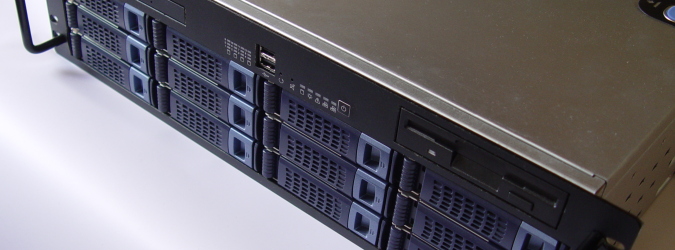Storage Area Networks (SANs) and virtualization (e.g. Microsoft’s Hyper-V, VMware’s ESX) are the rapidly growing present and dominant future of general purpose computing. After all the “cloud” is based on these technologies. Key to these new technologies is the sharing of computing resources, which by definition, are limited.
Speed of business isn’t just important – It’s everything
By abstracting applications, operating systems and data storage, IT departments and service providers can better scale, provision, centralize, utilize, and adapt to business needs far faster and far more cost effectively.
While these technologies can greatly improve IT’s ability to service the business, they come with age-old IT issues. For all the issues they resolve, there are others that they magnify. The concern of data security doesn’t go away; in fact it can be argued the issue becomes even more important of a consideration; largely due to the sharing of computing resources.
Computing resources aren’t infinite. IT managers challenged to build out and maintain computing infrastructures need to maximize use of the resources that are available. The four primary resources in the modern IT landscape are the same as in the physical; CPU, memory, network, and disk (storage).
Disk I/O performance has historically been the slowest of the primary components, and continues to be the weakest link, even with the advent of SANs, solid state drives and tiered storage systems. Improving disk I/O performance typically provides the greatest increase in performance in modern virtualized infrastructures, just as it has in the past with “physical” servers and direct attached storage.
Less is More
Data fragmentation that occurs natively in all general purpose operating systems, causes more disk I/Os to be generated than are necessary. Fragmentation is the condition in which pieces of individual files and free space on a disk are not contiguous, but rather broken up and scattered around the disk. This is known to negatively affect physical servers with direct attached storage. But, due to sharing of resources in a virtual infrastructure the issue becomes even more magnified. The extra unnecessary disk I/O traffic caused impacts not just on the culprit operating system, but all other operating systems that share that limited resource. This fragmentation manifests as storage area networks that no longer perform as they did at the outset, applications with greater latency, users waiting longer and longer for files to load, and challenges with maximizing virtual machine density on a host platform.
Eliminating fragmentation is proven to improve I/O performance. David Chernicoff, in his paper “Maximize the Performance of Your Windows SAN Infrastructure,” puts the problem simply:
Because the SAN file system is managed at the hardware level by the SAN, and any client that attaches to the SAN treats the SAN as local storage, the SAN manages its file system without regard for the way that the server operating system writes data. This means that the source of the fragmentation needs to be addressed; the data needs to be written to the SAN in a fashion that minimizes its fragmentation as it’s written, allowing for fewer, yet larger disk I/Os to be passed to the SAN.
Eliminating fragmentation reduces the number of disk I/Os required to accomplish business needs. If the same work can be done with less effort, that translates to lower costs and better performance.
Diskeeper Corporation, leaders in performance software, created a new technology called IntelliWrite(R) that significantly reduces I/O bottlenecks by preventing fragmentation from occurring in the first place. This must- have technology has been incorporated into Diskeeper products and is essential for getting the full desired I/O performance from your computing systems.
